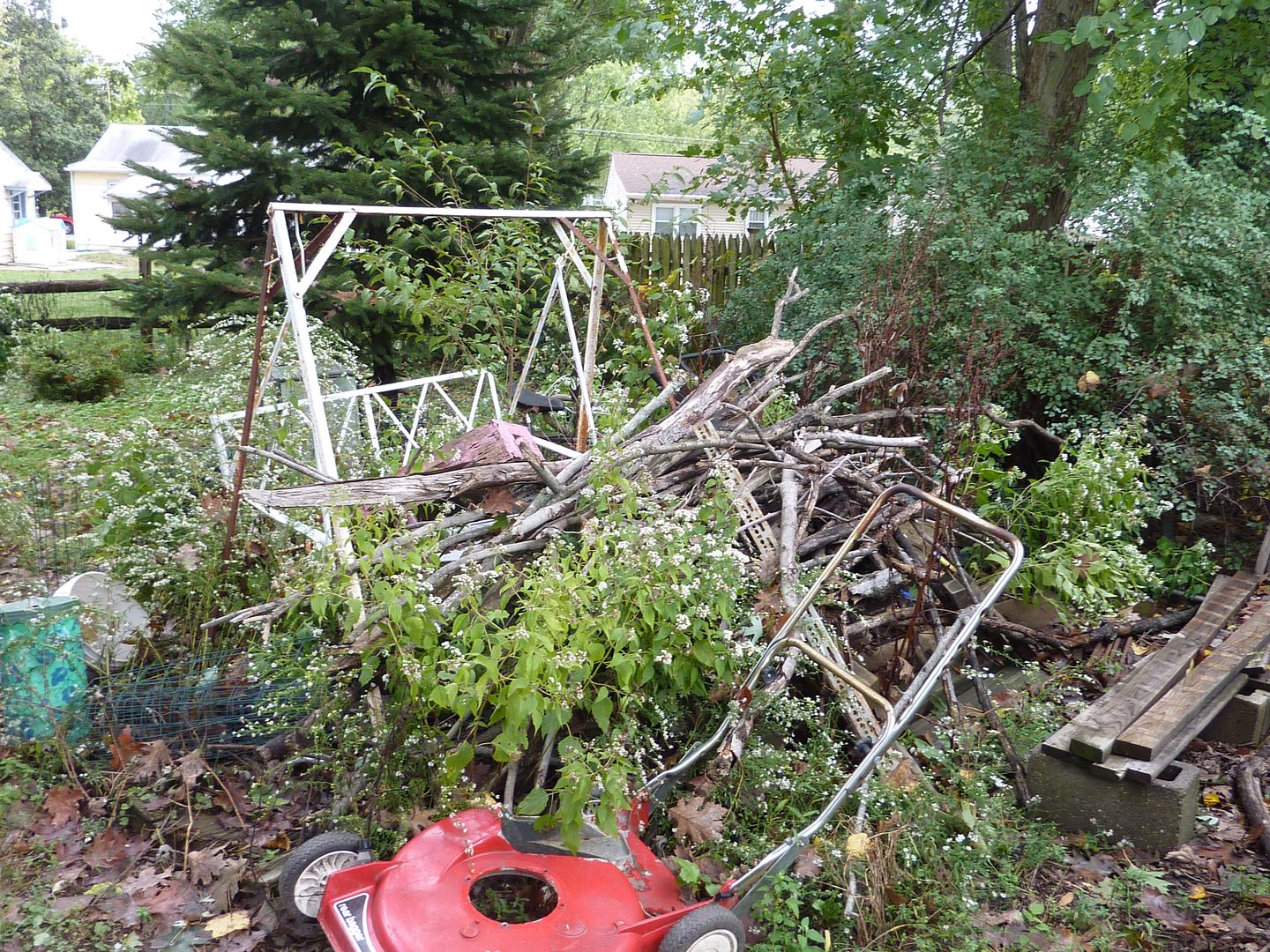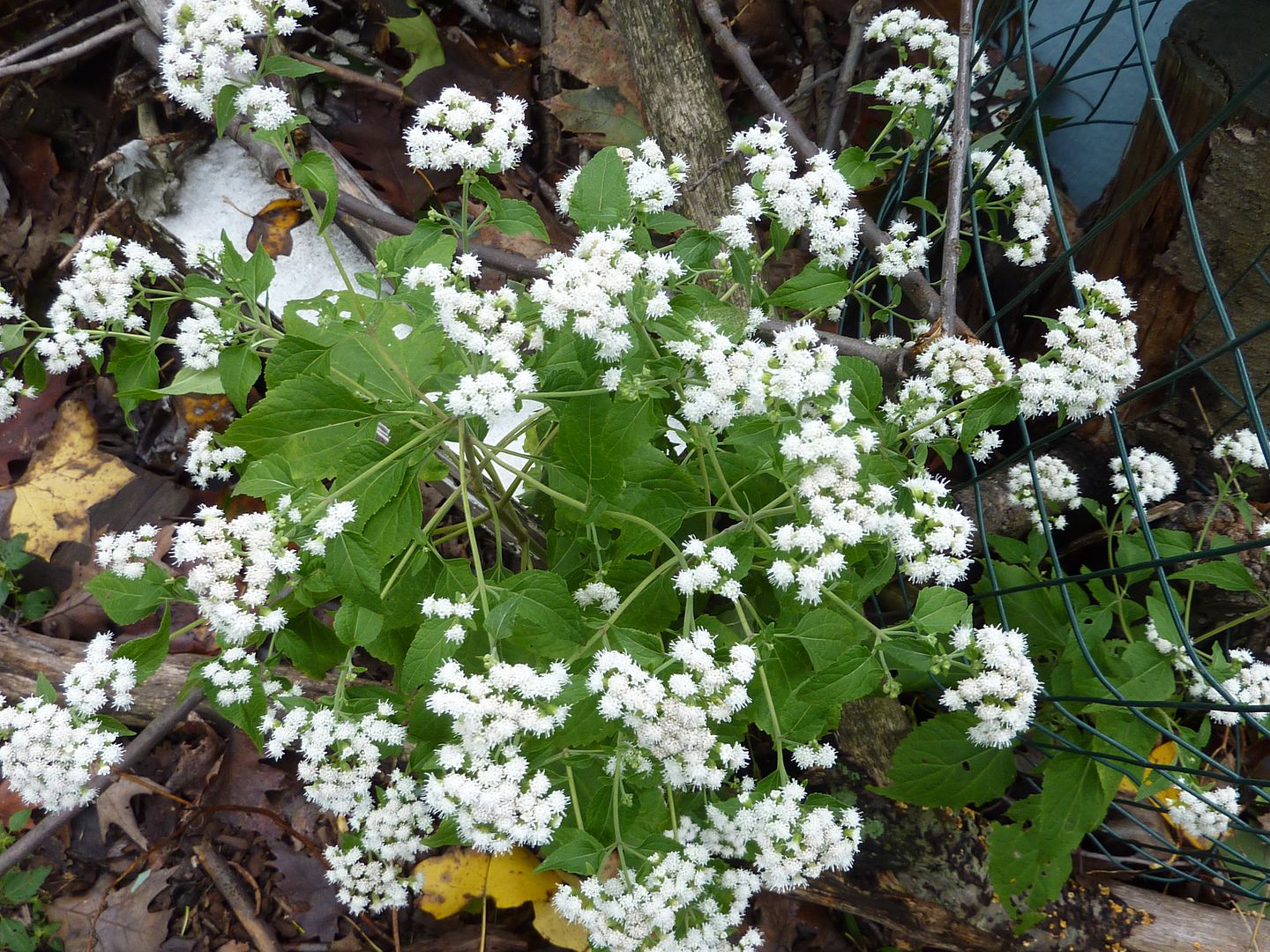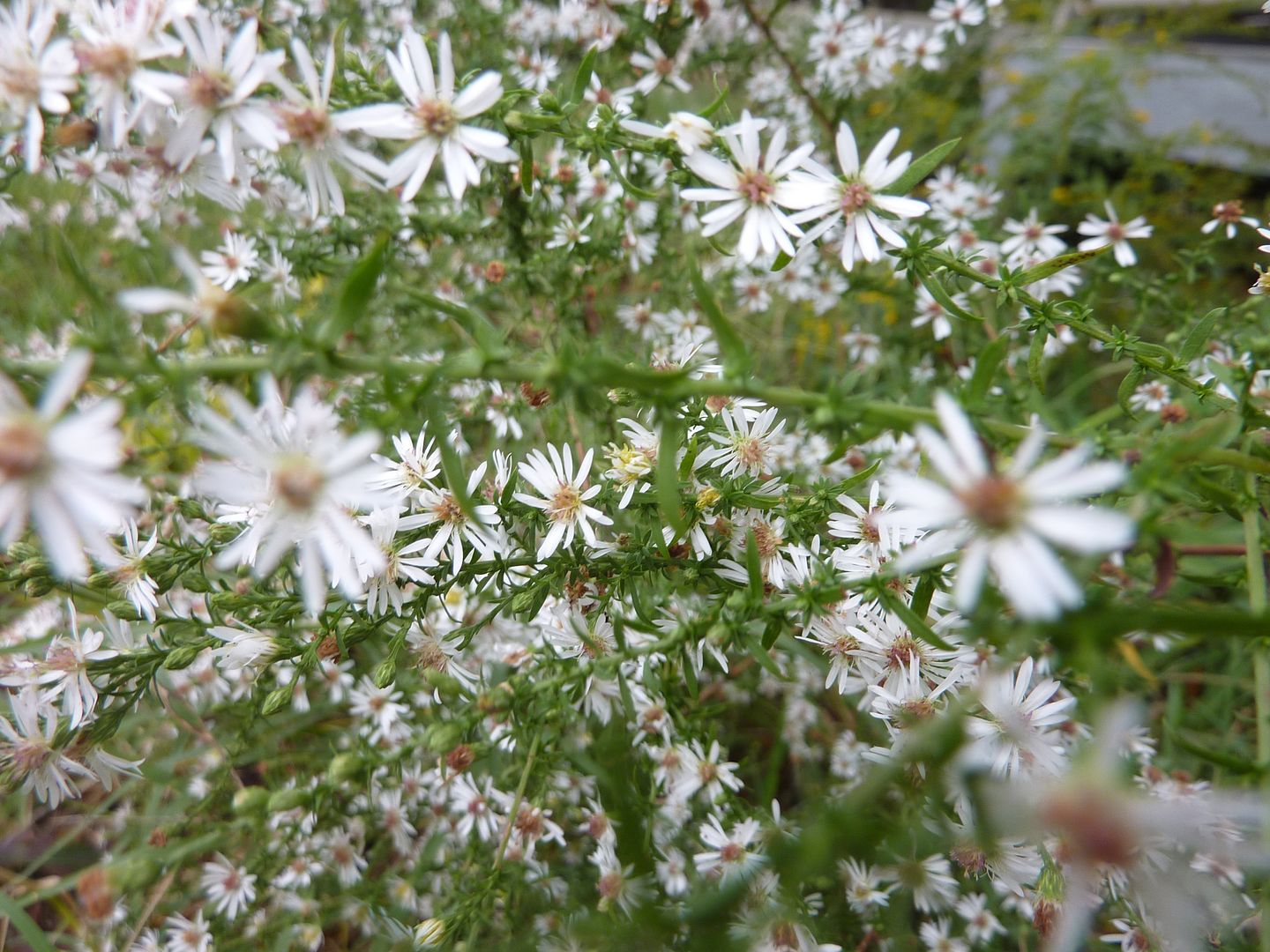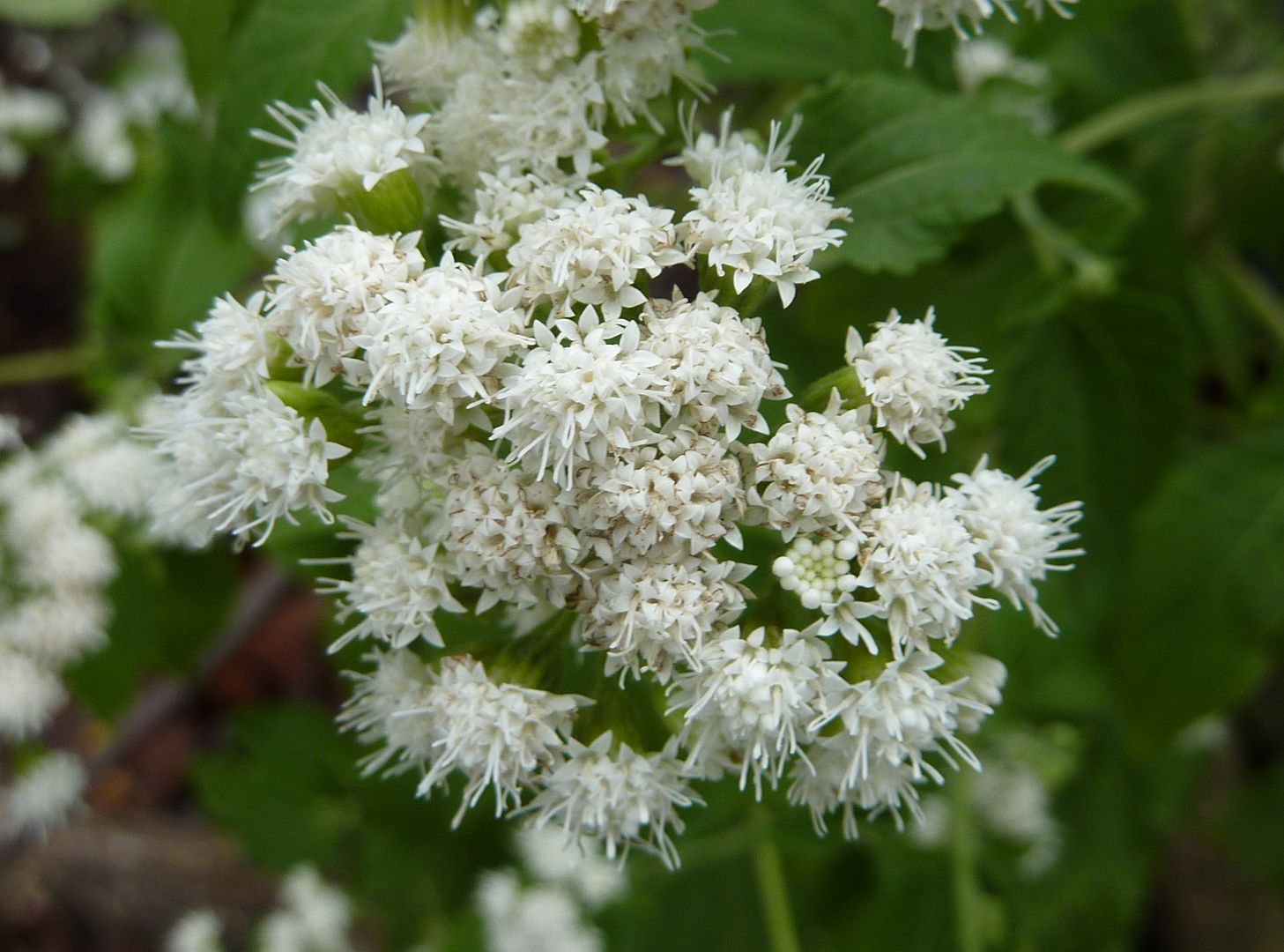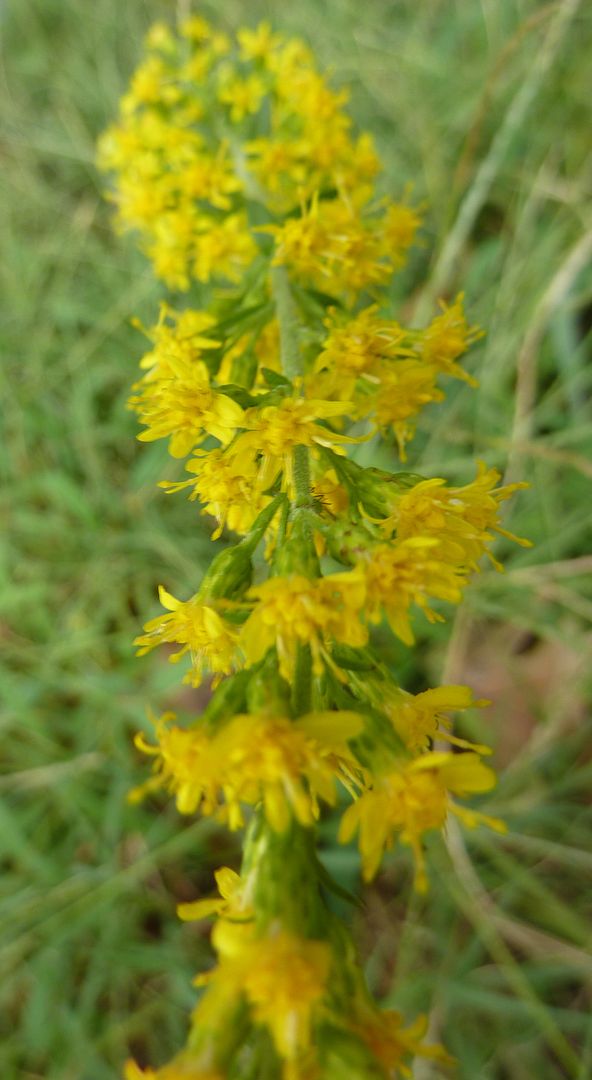... No this isn't a post asking for help getting this crap out of the yard. Though if someone would like to tell me the protocol for throwing away a glider from the 1980's that would be a great help. This is actually the spot we put all the miscellaneous things. The lawnmower lacking an engine is the easiest way to move a 300+ pound beehive. The rest is just a stack of branches to big or small to do much with. I'm posting this though becuase of the wildflowers naturally growing around all this. I didn't plant any of these. The species have been here for plants, they all have been growing here since before the house was built and slowly spreading about in the untamed parts of the yard. (though that may have had something to do with the lawnmower breaking.)
A White Wood Aster of some type is one.
The other is White Snakeroot. This plant is notorious for causing livestock to produce poisonous milk at least to humans. Not a plant that farmers or people with to much land should be growing, at least if there is livestock around.
Both plants are typically swarming with pollinators, usually smaller flies and sweat bees though. Rarely I'll see a honey bee on them and surprisingly enough I have never seen a bumblebee working either plant.
I took these pictures on a cloudy day where it had rained all morning. So there wasn't much out. Normally I'm not a fan of white flowering plants, and these two in particular aren't the prettiest I've seen. But there's something about them planted in mass, and if the light hits them just right that makes the whole area look prettier than it does on other times of the years.
The yard is littered with young plants with both species. If our yard became uncared for these two would surely take over among other plants.
Another plant slowly springing up all over is one of the shorter Goldenrods. Barely reaching 2' tall, I see this plant coming up in the dryer parts. This is the 5th species of Goldenrod to start growing out in the yard. I suppose this is a benefit to not weeding out the garden. But I guess the lesson here would be to learn what young plants look like before weeding it out.
The last volunteer I'll talk about is this pumpkin. The vine probably measures 25' and wasn't planted by me. Last year's compost pile was turned into a garden and this plant started growing of it's own steam. I allowed it to grow because I was curious to see what it would become. Watermelon, Cantaloupe/Muskmelon, Zucchini, and so on all look like the exact same vine to me, and some of them are simply the result of selectively breeding certain traits in and out of the plant.
